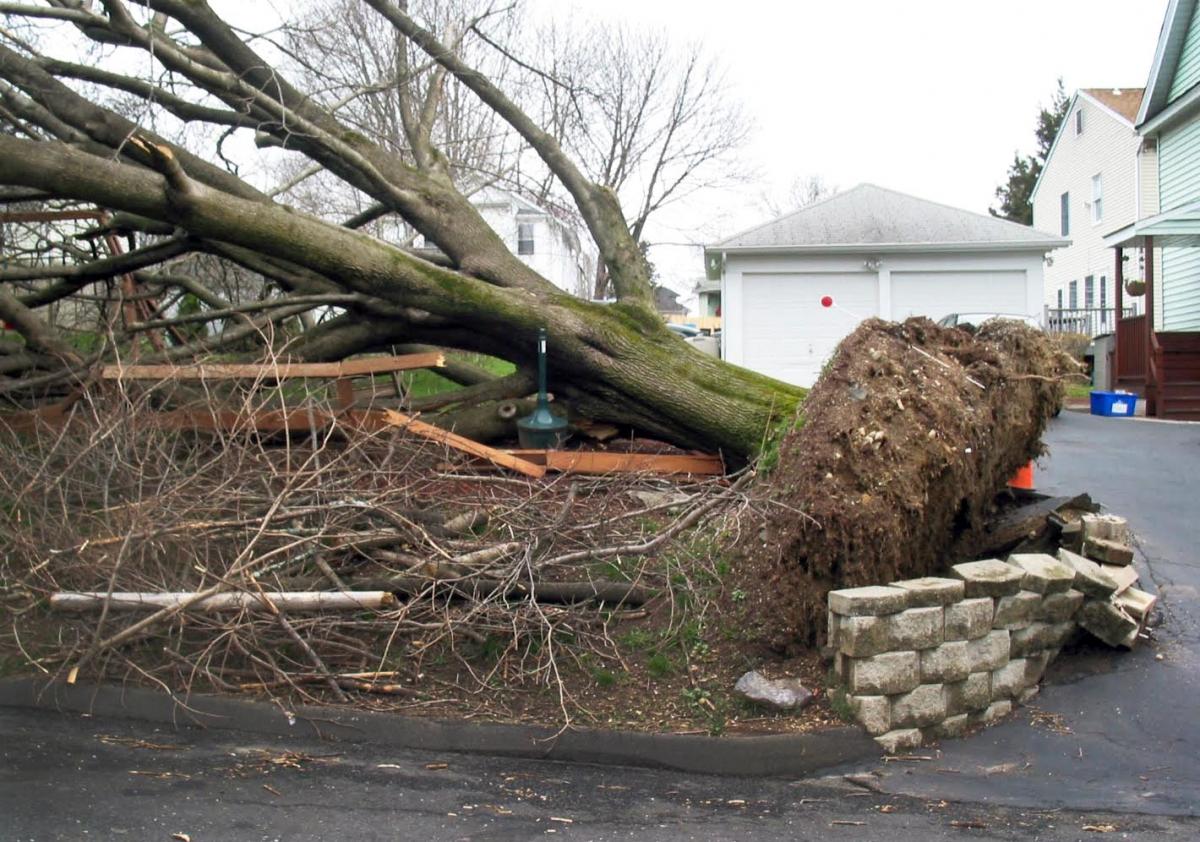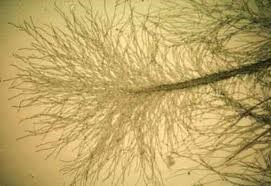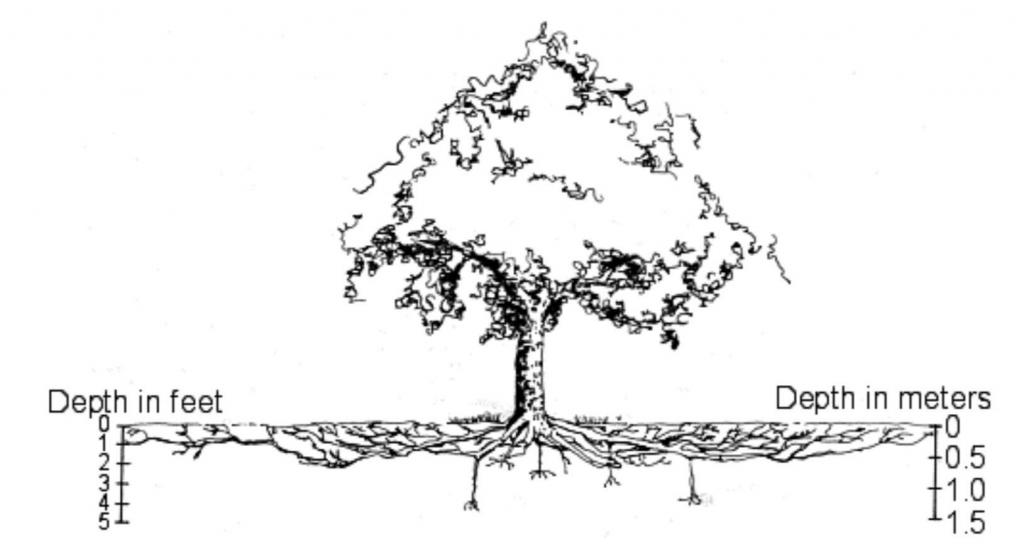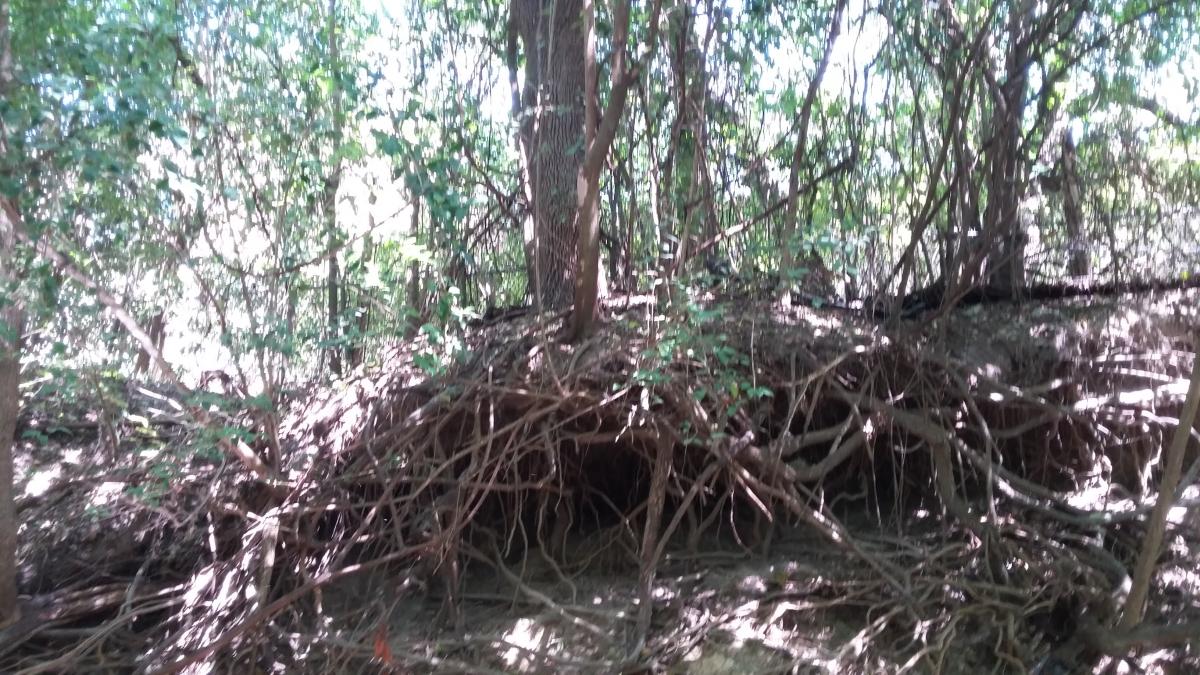How Tree Roots Work Part II: Digging Deeper
How Tree Roots Work Part I | How Tree Roots Work Part III: Mycorrhizae

Image Courtesy of the International Society of Arboriculture.
Severing roots along one side of the stem often leads to the tree falling the other direction.
There are two main types of tree roots: anchoring roots and feeder roots. Most roots are near the surface, as we described in Tree Roots and How They Work, but anchoring roots are often much deeper. As they grow outward, they can send “sinker” roots straight down to add to their strength. A single root can’t hold up much weight, but the network of large and small roots work together to hold the tree upright and keep the soil in place. Generally, roots on one side of the tree keep it from falling the other way. This is why we should never cut a trench right next to a tree trunk. A trench this close removes almost half the tree’s roots causing instability and reduces access water and nutrients.

Tiny root "hairs" as small as .2 mm in diameter help trees absorb water and nutrients. Image courtesy gibneyCE.com
Anchoring roots live for years and years, but feeder roots die and are replaced often, much like skin cells. They typically live within six inches of the soil surface because they must have access to air and moisture, which are not always present in deep soil. To help take in water, the interior of root cells is slightly salty; water naturally flows into the saltier solution because nature always seeks a balance, i.e. osmosis (click to learn more about osmosis). If a lot of salt is added to the soil (such as road salt or chemical fertilizers), it can cause a reverse effect. Moisture flows out of the tree to dilute the soil salts. The plant can wilt or even die. This is one big reason we should always pay attention to the labels and instructions for any chemicals we apply in our lawns and gardens.

Idealized drawing of a tree's roots.
Roots support the tree and absorb water and nutrients. They transport these liquids through tiny tubes that run all the way up the stem to the leaves. This allows the tree to send its resources from one area to another. Some tubes, called xylem, mostly carry water from the soil to the leaves. Other tubes, called phloem, mainly carry sugar and other products made in leaves to parts where they are needed. When the tree is strong and healthy, it makes more than it needs and stores the excess in roots, trunks, and branches. Then, when the tree is under stress (like from drought, disease, or pests), it can rely on the stored materials to survive until conditions improve.

Even when the soil under the trunk is eroded, the network of roots holds the tree up.
Roots support trees and help to reduce soil erosion. They absorb water and other useful compounds from soil that the tree uses to make food and other resources. They sometimes make defensive compounds to protect the tree when pests invade, and hormones to help control when leaves should drop. Roots also serve as storage centers for resources the tree can rely on during stressful times.
In our next installment, we will look even more closely at the finest roots and the fungal network that connects trees together in a giant communications network.
How Tree Roots Work Part I | How Tree Roots Work Part III: Mycorrhizae
Article contributed by Keith Babberney, Forester with the Community Tree Preservation Division in the Development Services Department. Questions? Email Keith.

